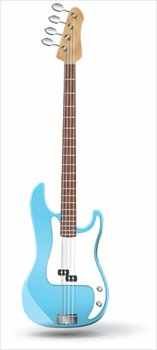
Since rock music has its roots in blues and jazz, it makes sense that the guitar became a staple of rock. Jazz guitar players were instrumental in the creation of electric guitars. With the heavy horn sections in big jazz bands, the stringed instrument players needed a way to be heard over the brass. Experiments from 1910 to the late 1920s focused on attaching microphones and tungsten pickups to acoustic guitars, but these methods were not very effective.
Modern electric guitars owe their existence to early innovators Les Paul, Adolph Rickenbacker and George Beauchamp. Paul is credited with inventing the solid body electric guitar. Beauchamp is recognized as the creator of the first amplified guitar, and Rickenbacker’s efforts were also critical to the development of the instrument. Rickenbacker’s aluminum Frying Pan, which was invented by Beauchamp, was the first guitar to be commercially produced.
Production of electric guitars for the retail market began in 1932. Growth was relatively slow due to the Depression and World War II. After the war, the invention of the Fender Broadcaster and Gibson Les Paul guitars stimulated the market. The growth of rock and roll music during the postwar period was also influential in the rising popularity of electric guitars.
In the modern era, companies like Musician’s Friend simplify purchasing a guitar. The astonishing amount of innovations in technology since the rock and roll era began can make choosing the right equipment somewhat confusing. Websites that consolidate numerous brands in one location make it easy to research different manufacturers and models. With user reviews and product specifications, finding the perfect guitar is a breeze.
Since the 1960s, guitars and related equipment have continued to evolve as new musical styles developed. Innovations in electronics have also influenced the design of guitars. Improvements in humbuckers, pedals and amplifiers make it possible to experiment with music in ways that were impossible in the 1930s. Computers and software have further expanded the boundaries of musical innovation.
